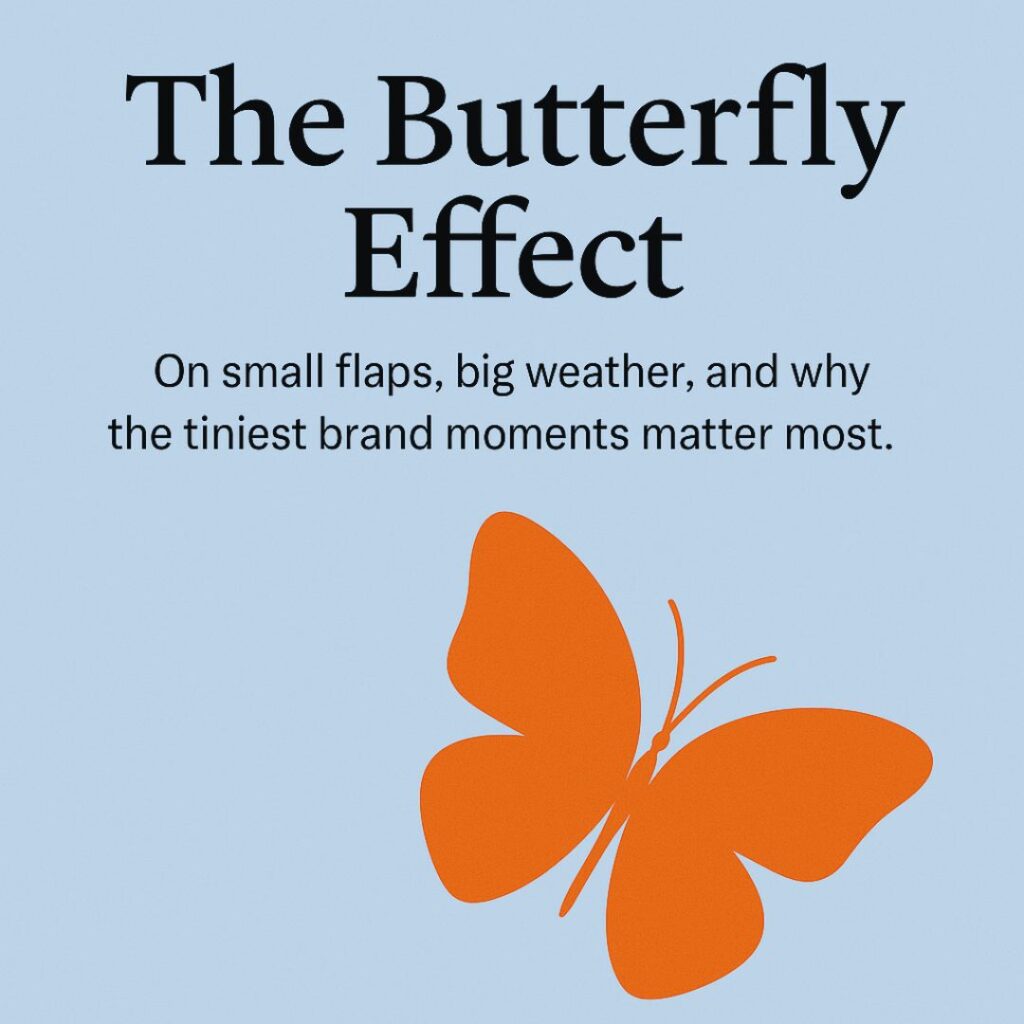Branding as Time Travel

At Otherwise, while exploring metaphors that allow us to look at branding from new angles. we’ve recently been intrigued by a set of studies in cognitive science suggesting that the human brain processes language and music in fundamentally different ways—each tuned to time, but in strikingly different registers.
When we process language, we read (or hear) words in sequence. We remain aware of what’s come before and anticipate what comes next, holding past and future in mind as we make meaning in the present. In this way, language mirrors linear time—side to side, start to finish, memory to possibility.
But music, especially instrumental music, is different. It unfolds in real time, but we don’t process it as a string of discrete inputs. Instead, we feel it as a whole. Its structure emerges in the listening—its logic sensed in the moment, rather than assembled retrospectively. It’s as if music exists in suspension: not separate from time, but saturating the now so completely that time feels altered.
So how might branding operate across these two temporalities? And more provocatively: what happens when we consider branding as a practice that spans three tenses at once—past, present, and future?
The Past: Memory and Meaning
Every brand begins by looking back. History matters. Founding stories, visual heritage, early audience bonds—these become anchors in a sea of change. When we build from the past, we’re constructing continuity: a sense of self that is coherent, rooted, recognizable.
But branding in the past tense cannot simply be about nostalgia or regression. It must reflect the action of metabolizing memory—turning the sediment of experience into the soil for new growth. A brand that understands its own history gains discernment: What are we carrying forward? What are we ready to let go? This is the domain of narrative clarity, and of honoring origin without being beholden to it.
The Present: Experience and Presence
If the past is where coherence lives, the present is where the brand becomes embodied. It’s in the details—the tone of a shipping confirmation, the phrasing of a tooltip, the responsiveness of a support reply, the moment after someone clicks “unsubscribe.”
These are not the marquee moments of branding. They’re the in-between spaces. But they are where the brand shows up in the life of its audience—often unexpectedly, often quietly, but always meaningfully. And when attended to with care, they create a kind of emotional resonance that no brand book can prescribe. This is branding as aliveness and presence.
The Future: Anticipation and Invitation
A brand is not just what it has said or done—it is what it is becoming.
Future-facing branding embraces the act of casting identity forward into the unknown. What do we want to stand for? What future are we helping to shape? What kind of world are we inviting people into? These questions become the design tools that reveal branding as a speculative act—one rooted in imagination, aspiration, and risk. When we brand for the future, we are positioning ourselves to help make what’s next, not chase it.
Fluency, Not Fixity
To brand in three tenses is to resist rigidity, pushing beyond the temptation to lock into a fixed state by understanding identity as a rhythm of remembering, responding, and reimagining. This approach doesn’t ignore the need for consistency—it simply refuses to collapse consistency into stasis. Instead, it asks us to cultivate fluency—a living capacity to move between memory, presence, and projection with grace.
Time as a Design Medium
In the end, branding in three tenses invites us to treat time as a design medium in its own right. It asks us to listen across durations, to weave coherence from memory, attention from presence, and meaning from possibility. When we work this way—attuned to sequence, suspension, and speculation—we’re shaping how brands are felt in time: remembered, encountered, imagined.








